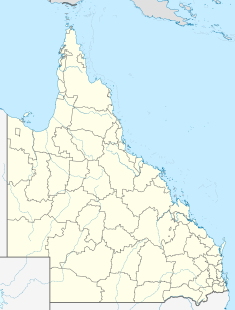Wheat Creek Culvert
| Wheat Creek Culvert | |
|---|---|

Wheat Creek Culvert on display in the King George Square bus station
|
|
| Location | Adelaide Street, Brisbane City, Queensland, Australia |
| Coordinates | 27°28′08″S 153°01′28″E / 27.4689°S 153.0245°ECoordinates: 27°28′08″S 153°01′28″E / 27.4689°S 153.0245°E |
| Design period | 1840s - 1860s (mid-19th century) |
| Built | 1861 |
| Architect | Christopher Porter |
|
Former Queensland Heritage Register
|
|
| Official name: Wheat Creek Culvert, Big Creek Culvert | |
| Type | state heritage (built, archaeological) |
| Designated | 24 January 2003 |
| Delisted | June 2015 |
| Reference no. | 602218 |
| Significant period | 1861 (fabric) 1860s (historical) |
| Builders | H C Love |
Wheat Creek Culvert was a heritage-listed culvert at Adelaide Street, Brisbane City, Queensland, Australia. It was designed by Christopher Porter and built in 1861 by H C Love. It is also known as Big Creek Culvert. It was added to the Queensland Heritage Register on 24 January 2003, but was removed in June 2015 after it was destroyed to create the Inner Northern Busway. However, a short section was preserved as a feature in the King George Square busway station.
The Wheat Street culvert was constructed in 1861 as part of Brisbane city's drainage system, and was one of the first civil engineering projects of the newly formed Brisbane Municipal Council. In 1825 the penal settlement at Moreton Bay was moved from Redcliffe to Brisbane, where a reliable supply of water could be found. This was the Wheat Creek (also known as the 'Big Creek') that rose near the site of the modern Brisbane Grammar School, in College Road. The creek flowed through what was later the Roma Street railway yards, forming a lagoon between modern George and Roma Streets and to the so-called horse pond formerly in front of the present Brisbane City Hall site. From here the creek flowed diagonally across the present Adelaide and Albert Streets intersection between Queen and Adelaide Streets and entered the river at the end of the present Creek Street. The bed of the creek is still visible down the service laneways in Adelaide Street.
...
Wikipedia


